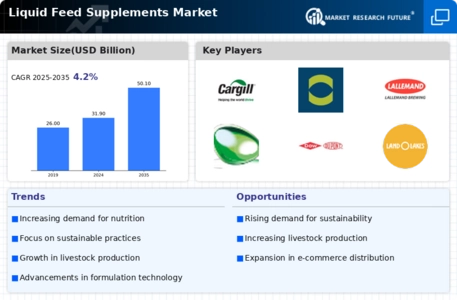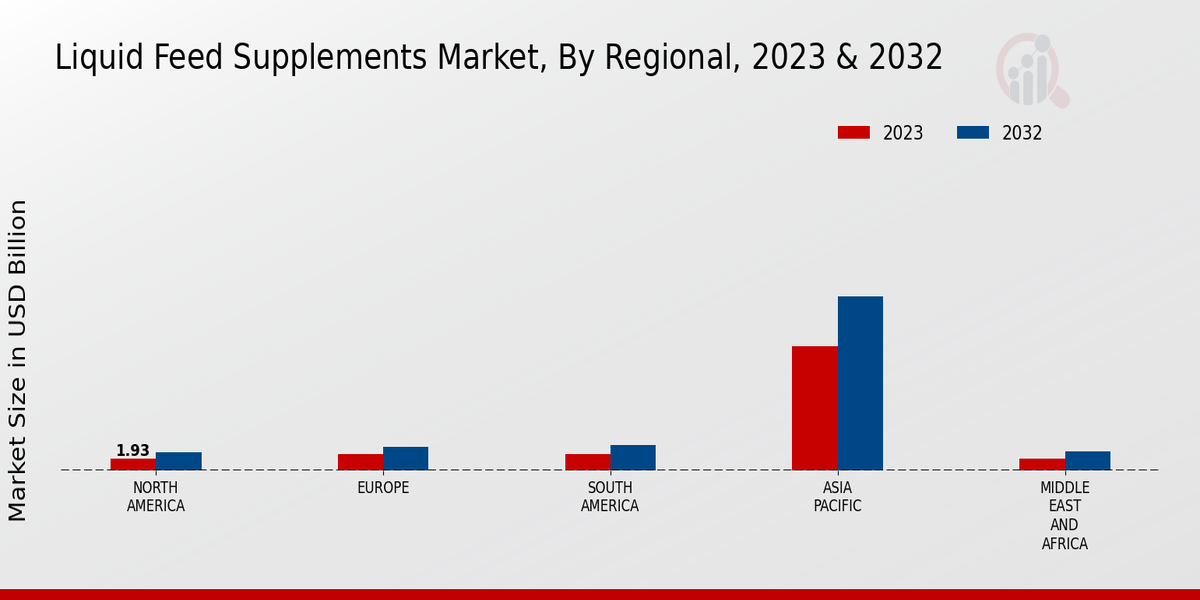Market Growth Projections
The Global Liquid Feed Supplements Market Industry is poised for substantial growth, with projections indicating a market value of 31.9 USD Billion in 2024 and an anticipated increase to 50.1 USD Billion by 2035. This growth trajectory reflects a compound annual growth rate (CAGR) of 4.17% from 2025 to 2035, driven by various factors including rising livestock production, technological advancements, and increasing consumer demand for high-quality animal products. The market dynamics suggest a robust future for liquid feed supplements, as stakeholders adapt to evolving agricultural practices and consumer preferences.
Growing Focus on Sustainable Agriculture
Sustainability emerges as a critical driver in the Global Liquid Feed Supplements Market Industry. As global agricultural practices evolve, there is a heightened emphasis on environmentally friendly and sustainable feed solutions. Liquid feed supplements that promote efficient nutrient utilization and reduce waste are increasingly favored by livestock producers. This shift aligns with global sustainability goals and consumer preferences for eco-friendly products. The market's growth potential is underscored by a projected CAGR of 4.17% from 2025 to 2035, indicating that sustainability will likely remain a key consideration in feed supplement development.
Regulatory Support for Feed Quality Standards
Regulatory frameworks supporting feed quality standards contribute to the growth of the Global Liquid Feed Supplements Market Industry. Governments worldwide are implementing stringent regulations to ensure the safety and quality of animal feed. These regulations encourage the adoption of high-quality liquid feed supplements that meet established safety and nutritional standards. Consequently, livestock producers are more inclined to invest in premium feed solutions, fostering market growth. The emphasis on regulatory compliance is expected to drive the market towards a projected value of 50.1 USD Billion by 2035, as producers seek to align with evolving standards.
Technological Advancements in Feed Production
Technological innovations play a pivotal role in shaping the Global Liquid Feed Supplements Market Industry. Advances in feed formulation and production techniques enhance the efficiency and effectiveness of liquid feed supplements. For instance, the incorporation of precision nutrition technologies allows for tailored feeding solutions that optimize animal health and productivity. These advancements not only improve feed conversion rates but also contribute to sustainable livestock production practices. As a result, the market is expected to grow significantly, with projections indicating a value of 50.1 USD Billion by 2035, reflecting the impact of technology on feed supplement development.
Increasing Livestock Production and Consumption
The Global Liquid Feed Supplements Market Industry is significantly influenced by the rising livestock production and consumption rates worldwide. As populations grow and dietary preferences shift towards protein-rich foods, the demand for livestock products escalates. This trend necessitates the use of effective feed supplements to enhance livestock productivity and health. The market's expansion is evident, with a projected value of 31.9 USD Billion in 2024, driven by the need for efficient feeding strategies. As livestock producers strive to meet the increasing demand, liquid feed supplements are likely to play a crucial role in optimizing production.
Rising Demand for Nutritional Livestock Products
The Global Liquid Feed Supplements Market Industry experiences a surge in demand for nutritional livestock products. This trend is driven by the increasing consumer awareness regarding the quality of animal-derived food products. As consumers prioritize health and nutrition, livestock producers are compelled to enhance the nutritional value of their feed. This shift is reflected in the projected market value of 31.9 USD Billion in 2024, indicating a robust growth trajectory. The emphasis on quality and nutrition in livestock feed supplements is likely to continue, as producers seek to meet evolving consumer expectations.




















